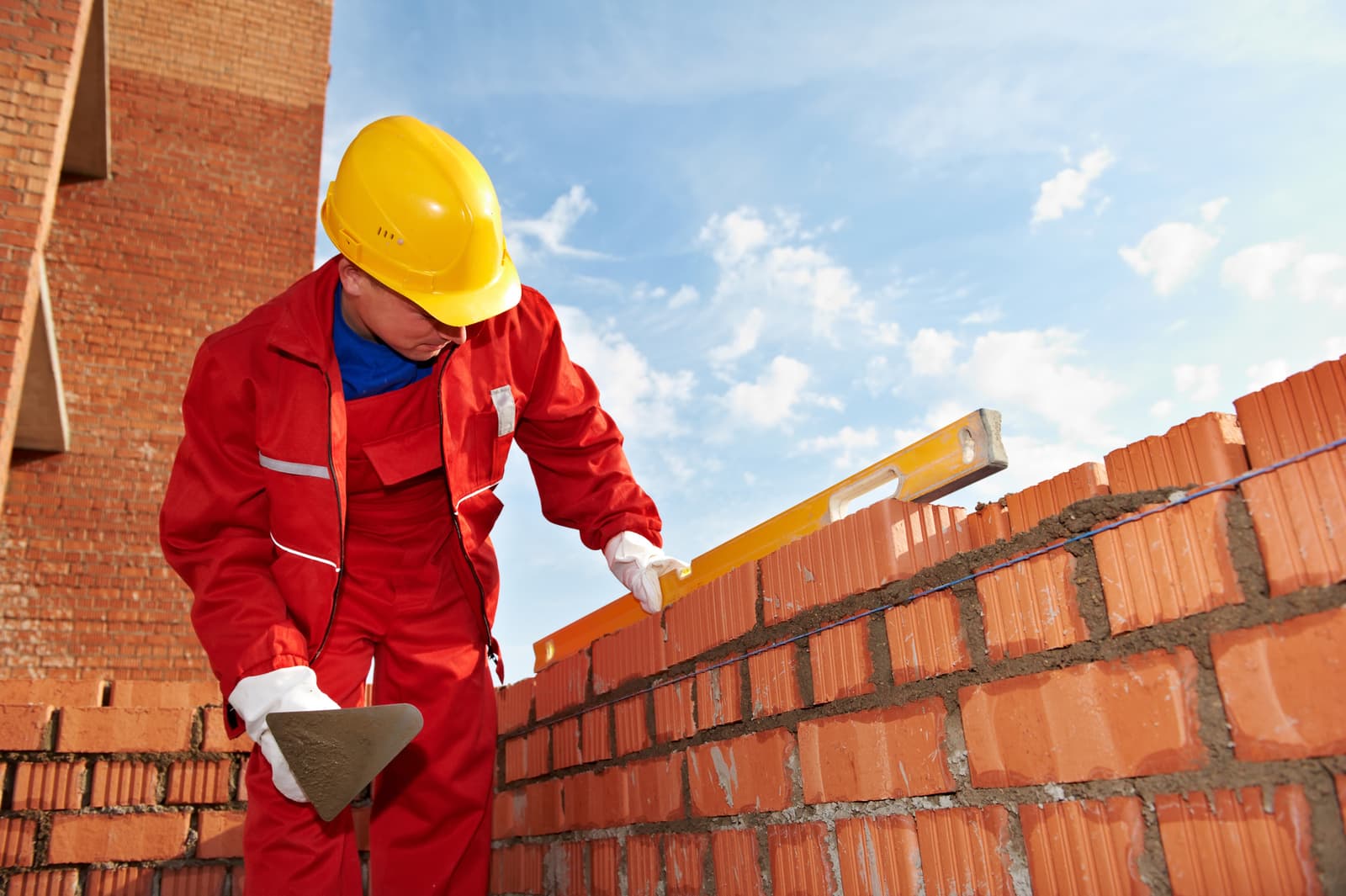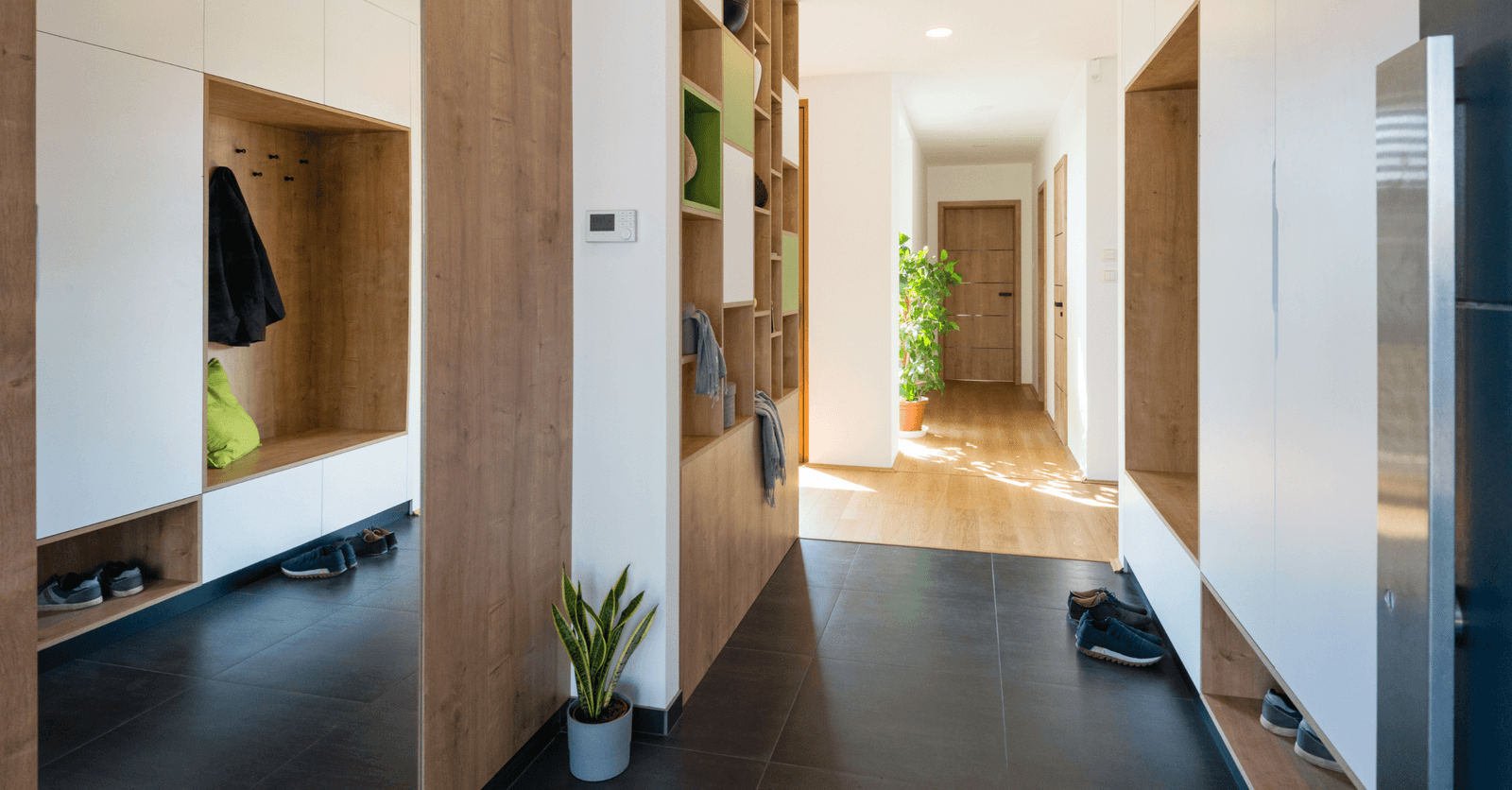
You can’t just decide to call yourself a mason on a whim, since techniques like formwork are difficult to master, even for professionals. However, with the right masonry tools, available at hand in your toolbox, some jobs can be done independently.
Therefore, here's an overview of the most important masonry tools along with their specifications. This list of tools isn't as exhaustive as it sounds. In fact, as Jonathan Barras, of Maçonnerie Élégance, explained in an interview we did with him: "As for basic tools [trowels, hammers, etc. Ed.], it's really up to the employees to get them.”
Most Common Tools Used by Masons
Barras also pointed out that, "When working on new masonry, workers use tools such as trowels, tables, jointer, a level, and hammer." To lay it out differently, let's just say that every mason must have at least 9 indispensable masonry tools: trowel, float, plaster, set square, plumb bob, string line, concrete mixer, sledgehammer, and masonry chisel.
Trowel

Source: Pixabay
The trowel is the most iconic masonry tool. It's basically a steel blade either triangular, trapezoidal, or square in shape, fixed to a curved or profiled handle. It comes in three varieties: basic, berthelet, and brick trowel.
Basic trowel
A basic trowel is basically a tool used to mount common bricks (round trowel), to grout bricks, and when tuckpointing (tuck pointer).
However, don't assume that the basic trowel is a specific type of trowel. In fact, it's a category that, along with the tuck pointer and the round trowel, includes the renowned Venetian plaster trowel, triangular trowel, or a hand trowel with a tapered blade. In fact, every mason needs these various trowels to perform precision work.
Berthelet trowel
Triangular in shape, the berthelet trowel has two unique shapes, lengthwise. On one side, it’s bevelled and smooth, and on the other, it’s usually jagged. The toothed side can be used to remove any surplus plaster on the work surface, while the flat side is used for finishing work, especially when smoothing out the plaster.
Brick trowel
It's the ultimate time-saver. Since it has bevelled edges, the brick trowel is ideal to cut bricks. To split the brick, simply strike each corner of the brick with the edge of the trowel, then strike it with the back of the handle.
Plastering float
Whenever you see a mason with a trowel in one hand, you can probably assume that they have a plastering float in the other. Keep in mind that they also have to carry the mortar. That's why they use a float. Basically, it's a flat, square-shaped tool masons slap on mortar or plaster. Often, masons use it to smooth out the plaster on the wall they're building.
Are you looking for experts for your masonry project?
Fill in this form to be connected with top-rated contractors!
Plastering trowel
This is another tool in the plasterer’s float family, and it has a semi-hard surface that’s perfect to smooth out plaster, screed, or cement. It’s also known as a “mason’s trowel” or “pointing trowel.” Its rubber base also makes the float perfect for tiling without fear of scuffing the surface.
Different trowels should be used depending on the work at hand:
Venetian plaster trowel: To smooth out screed and plaster;
Flemish-style float: Perfect to level the ground;
Swiss plastering float: Convenient to smooth out the plaster.
Steel corner brace
The corner brace enables masons to ensure right angles. It’s one of the indispensable tools a mason can have on hand.
Brass plumb bob and string line
After the set square for right angles, there’s the plumb bob for vertical reference. Said tool is used to ensure that a wall is built straight, and is an essential masonry tool.
Together with a string line, these two instruments ensure that a wall is straight, both in terms of length and height. It's the string, or more precisely its clever setup, that makes it all possible: The string is nothing more or less than a cord pulled from an anchor point called an "eyelet." The line's perpendicularity is ensured by pulling another string across the line and attaching it to two markers. As Barras pointed out, "In masonry, to measure, you can use tools like levels, string lines [to mark, to trace, Ed.]." This speaks to its significance.
Concrete mixer

Source: Pixabay
This tool is very dependent on the project's size. It's unnecessary should you be pouring a slab with a surface of less than 50 ft² (15m²), or when building interior walls. However, as soon as the work becomes substantial, you have to mix the concrete in a concrete mixer.
Electric or heated concrete mixer?
For interior work, an electric concrete mixer is naturally more suitable, as long as it doesn't have an exhaust. Since this device will be used for small jobs, the electric concrete mixer will work just fine.
On the other hand, a heated concrete mixer bears a much more extensive use than an electric mixer. However, its heat engine requires one to use it outdoors or indoors if the house is under construction and has yet to have doors or windows installed.
Club hammer and brick chisel
Introducing both tools at the same time, as one is used to strike the other. The club hammer falls into three categories:
Square-faced club hammer;
Rounded-face club hammer;
Mallet.
If the square-faced club hammer is best suited for hammering stone, and the mallet for woodworking, the rounded-face club hammer is the most efficient when working with a brick chisel. In fact, its design allows you to direct the strike force to a specific spot on the chisel. The term "masonry chisel" doesn't refer to two steel blades, but rather to a thin, flat piece of metal on top of the chisel. Its function? To cut brick, stone or concrete. If at first, it doesn't do the trick, you can add a flat chisel to your arsenal.
Easily find clients starting today
Get started today and connect with the projects that suit you best!
Overview of the different masonry tools and their features
Also mentioned by Barras in terms of tools: “Renovation workers use a lot more tools than new masonry project workers such as saws [Arbotech Tools, Ed.] or drop-in anchors.” Along with the 9 must-have tools above-mentioned, other tools are also required, such as clamps, concrete planer, combi hammer, masonry brush, and brick jointer.
Clamps
Also known as brick anchors, clamps are small, metal rods on which a metal plate slides. The mason will shove the tip of the rod into a wall and then slide the metal plate until it clamps onto a wooden board used as formwork.
Clamps are used to allow workers to plaster walls while the mortar isn’t yet dry. However, note that formwork techniques are very specific and not all masons can perform such work.
Concrete planer
A concrete planer is essential when finishing a screed as it gives the concrete a smooth and compact finish. Sometimes referred to as a "surface planer" because of the way it works, or a "scarifier.” In fact, the concrete planer is fitted with blades attached to a single or double rotor, which will smooth over a surface.
Combi hammer
Although it might resemble a drill, the combi hammer isn't even close to being in the same category. If you have load-bearing vibro concrete walls in your home, you've probably already burned through your drill bit without making a single dent. With a combi hammer, there’s no doubt about it, it functions by first having a piston compressing a pocket of air, which will then impact the hammer, which then activates the drill. The result: You can drill through vibro concrete, reinforced concrete, granite, hard brick, and other materials. Heavy-duty and relatively quiet, it's both electromechanical and electro-pneumatic. If one of the most expensive tools is the Arbotech saw [about $1,200 to $2,000, Ed.], the drill isn't far off with its $200 to $1,000 low-end price point.
Masonry brush
This small tool is especially useful for finishing work. The masonry brush is primarily used to enhance the surface appearance of concrete or brickwork.
Brick jointer
Behind this clear-cut name lies a very useful tool. It's essentially a metal spike that can be used to make mortar joints. Using this tool ensures that the joints are rendered waterproof.
Cost of Masonry Tools

In Quebec, masonry tools can be found in all hardware stores. Based on the essential tools we've just listed, here's a ballpark budget for masonry tools that’ll get the job done:
Trowel: approx. $15;
Concrete float: approx. $10 to $20;
Plasterer’s float: approx. $50;
Set square: approx. $4 to $20;
Plumb bob: approx. $10 to $30;
String line: approx. $35/kit;
Concrete mixer: approx. $500;
Club hammer: approx. $25;
Brick chisel: approx. $4 to $30.
All tallied up, it amounts to approx. $725 for must-have masonry tools. To those, one can also add the following tools:
Clamps: approx. $20 to $50;
Concrete planer: approx. $200 to $700;
Combi hammer: approx. $200 to $1,000;
Masonry brush: approx. $10 to $20;
Brick jointer: approx. $10 to $20.
The above-listed tools will run you about $1,790. Altogether, purchasing all masonry tools will come out to about $2,515.
Want to know whether your project requires a mason? Check out our article When Should You Hire a Mason?
Cover photo source: Pixabay
Get 3 quotes for your masonry project
RenoQuotes.com can help you get quotes for your masonry project. By submitting your project, we’ll put you in contact with top-rated contractors. Fill in the form on the homepage (it only takes a few minutes), and you will get estimates from trusted professionals.
Dial 1-844 828-1588 to speak with one of our customer service representatives.
Looking for something else?
Related articles
The latest industry news, interviews, technologies, and resources.

Editorial Team
•07 Nov 2023
This week, RenoQuotes.com met up with one of our general contractors on location at a renovation site. During this interview, Yves explains what his job is about and how he guides his clients through their renovation process.

Editorial Team
•04 Oct 2024
Technically speaking, DIYing your entryway decor with tile is entirely possible. However, from an aesthetic point of view, the whole process can be quite risky.

Editorial Team
•07 Nov 2023
More and more people are beginning to realize the impact their home has on the environment and as a result are starting to make updates to their homes. The added benefit to these green tips is that ultimately, they help save you money, which in turn translates into your peace of mind.

Editorial Team
•07 Nov 2023
As with all structural aspects of your home, wear and tear happen. Whether it’s a result of age, weather conditions, or a sudden incident, it’s important to be flexible and prepared when approaching necessary home renovations.

Editorial Team
•02 Jul 2024
We’ve said it once, and we’ll say it again: The simplest or most subtle details will often be the ones that most impact your decor. Little touch-ups here and there like painting over walls and kitchen cabinets, or adding shelves are practical tips for those who’d rather avoid extensive renovation projects.